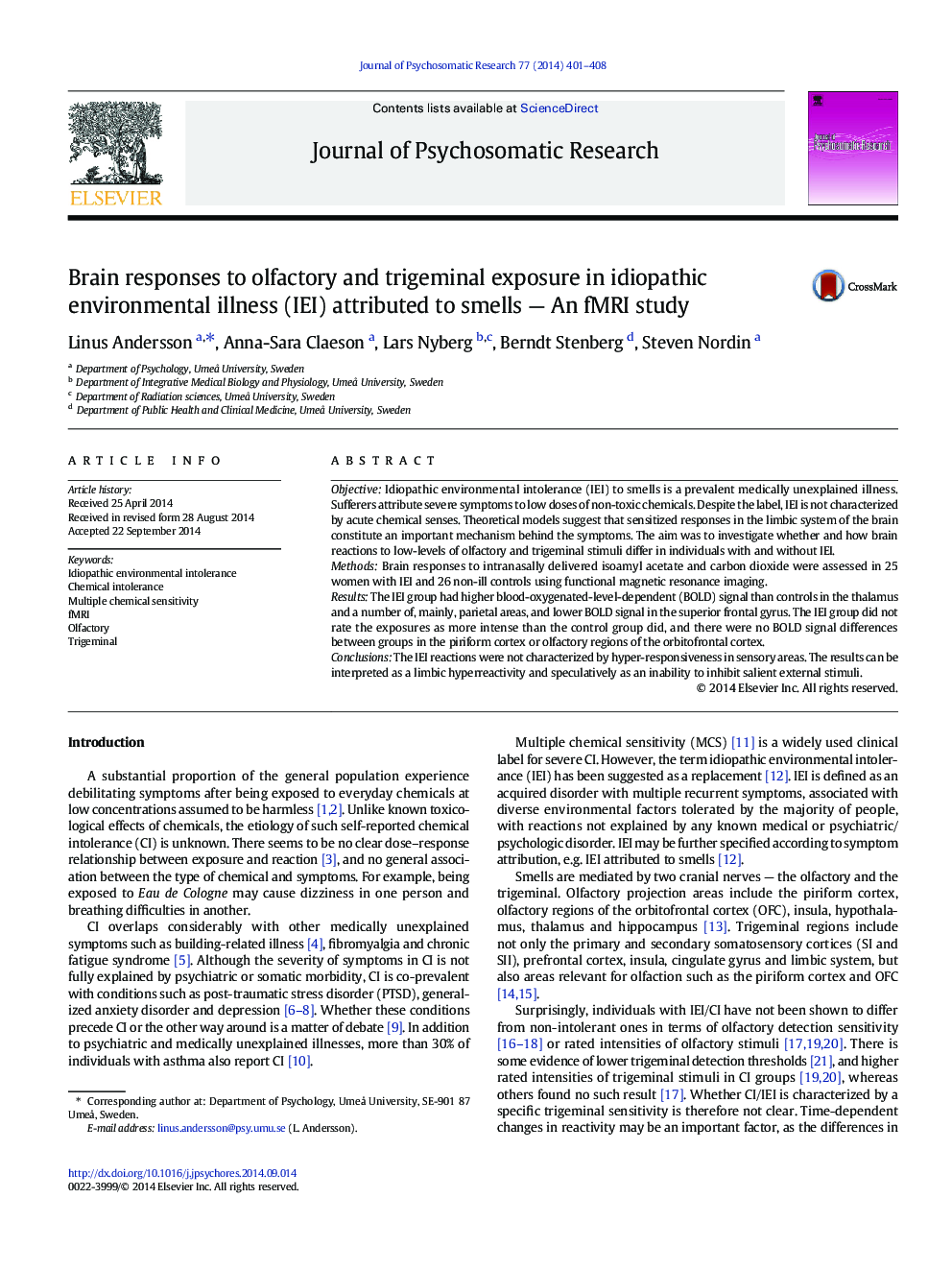| کد مقاله | کد نشریه | سال انتشار | مقاله انگلیسی | نسخه تمام متن |
|---|---|---|---|---|
| 949300 | 926743 | 2014 | 8 صفحه PDF | دانلود رایگان |

• IEI patients did not rate intranasal exposures to chemicals as more intense than a control group
• High BOLD signal in thalamus and parietal regions during chemical exposure in IEI
• Low BOLD signal in prefrontal region during chemical exposure in IEI
• IEI is not characterized by heightened reactions in chemosensory brain regions.
• Results can be interpreted as an inability to inhibit chemosensory stimuli in IEI.
ObjectiveIdiopathic environmental intolerance (IEI) to smells is a prevalent medically unexplained illness. Sufferers attribute severe symptoms to low doses of non-toxic chemicals. Despite the label, IEI is not characterized by acute chemical senses. Theoretical models suggest that sensitized responses in the limbic system of the brain constitute an important mechanism behind the symptoms. The aim was to investigate whether and how brain reactions to low-levels of olfactory and trigeminal stimuli differ in individuals with and without IEI.MethodsBrain responses to intranasally delivered isoamyl acetate and carbon dioxide were assessed in 25 women with IEI and 26 non-ill controls using functional magnetic resonance imaging.ResultsThe IEI group had higher blood-oxygenated-level-dependent (BOLD) signal than controls in the thalamus and a number of, mainly, parietal areas, and lower BOLD signal in the superior frontal gyrus. The IEI group did not rate the exposures as more intense than the control group did, and there were no BOLD signal differences between groups in the piriform cortex or olfactory regions of the orbitofrontal cortex.ConclusionsThe IEI reactions were not characterized by hyper-responsiveness in sensory areas. The results can be interpreted as a limbic hyperreactivity and speculatively as an inability to inhibit salient external stimuli.
Journal: Journal of Psychosomatic Research - Volume 77, Issue 5, November 2014, Pages 401–408